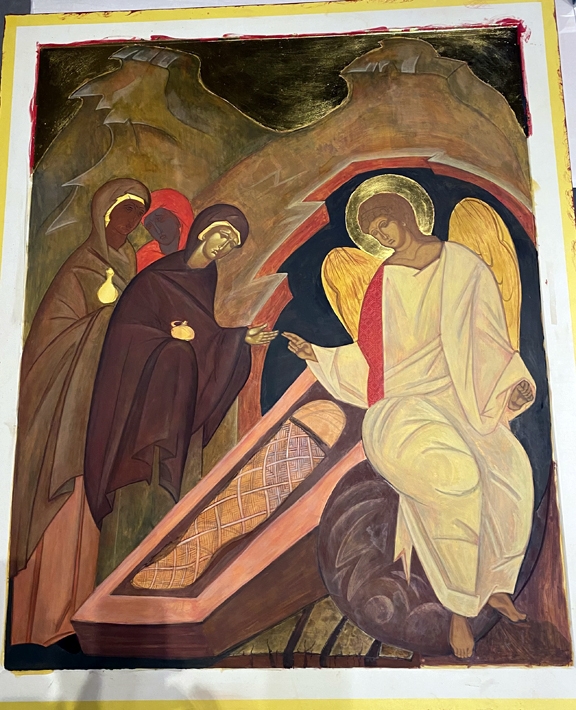This update combines the weeks of February 15 and 22, as Portland experienced a snow and ice storm that removed this writer’s internet access and power for two weeks.
Here is the progress report on the details we addressed, specifically the faces, tomb, rock and shroud. Intermediate student, Christina Wolf (who is not pictured because she was behind the camera) added highlights to the entrance of the tomb. You can see the bright highlights over the red entrance to the tomb, which is meant to signify that a holy event has occurred. The bright highlights on people and on things indicates holiness. As we progress, you will see that these highlights are one of the last steps to enliven this event and its participants.
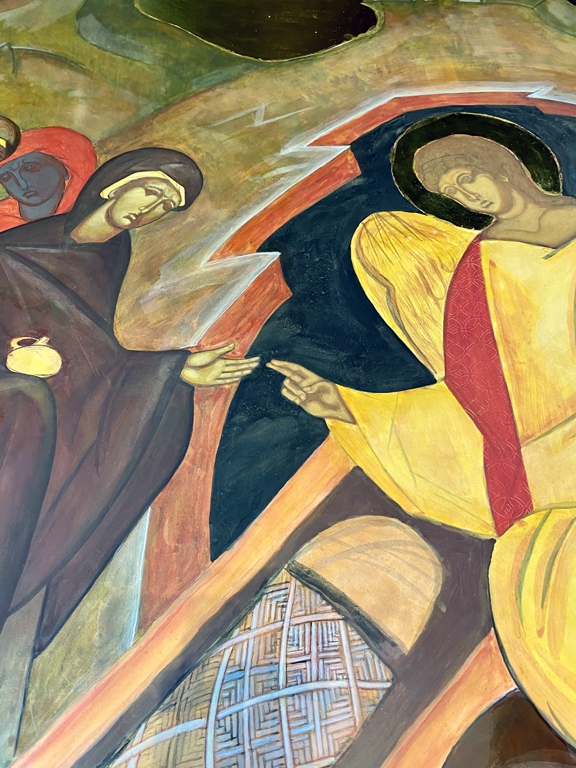
Father Jon attends to the exquisite details of the shroud, based on the designs of ancient burial cloths.
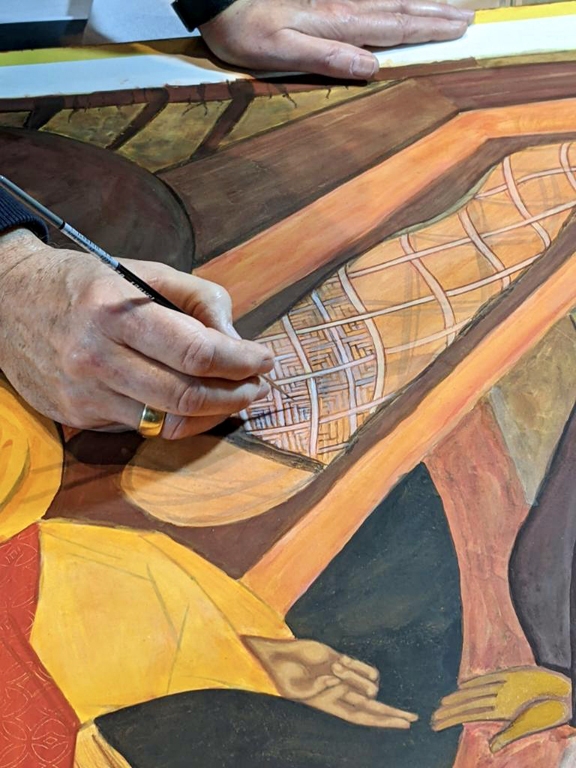
Christine works on the rock in complete solitude (hence mask off) in an empty (but warm) Cathedral while her electricity is still out of order. The rock on which the angel sits, is a fantastical representation of what sealed Christ’s tomb. Because the boulder has the same coloration as Mary Magdalene’s garments, this rock will require many glazes in colors found in her garment to help unify the icon. Designs on the rock are specific to natural elements depicted in iconography. Here we are following the rock patterns as originally painted by Leonid Ouspensky.
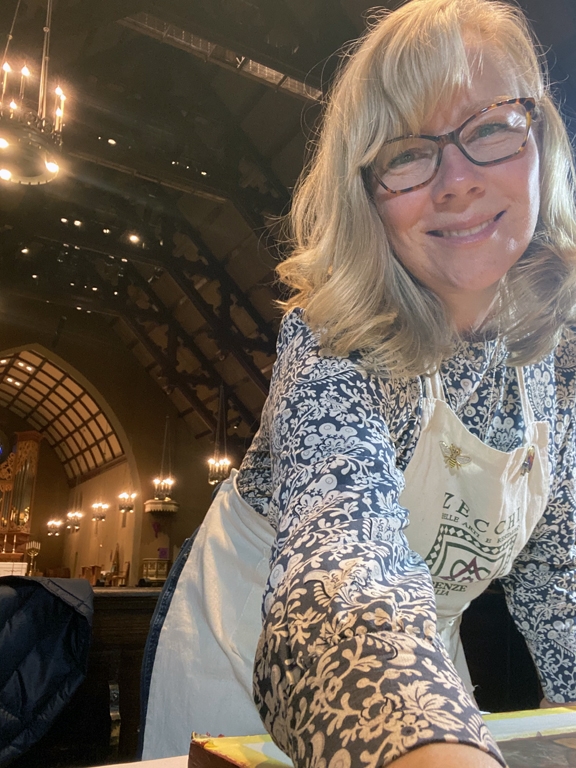
Week of February 22, 2021
During the storm during this week, Father Jon made it in to the Cathedral to refine the angel’s garment. Over the next several weeks, you will see the angel’s garment transform from its earlier bright yellow to a shining white and gold raiment with intricate gold embellishment. In iconography, dazzling gold detail on garments is called “gold assist.” Father Jon is now setting up highlights and depth in the garment folds for this very special application of gold assist which occurs near the end of the painting process.
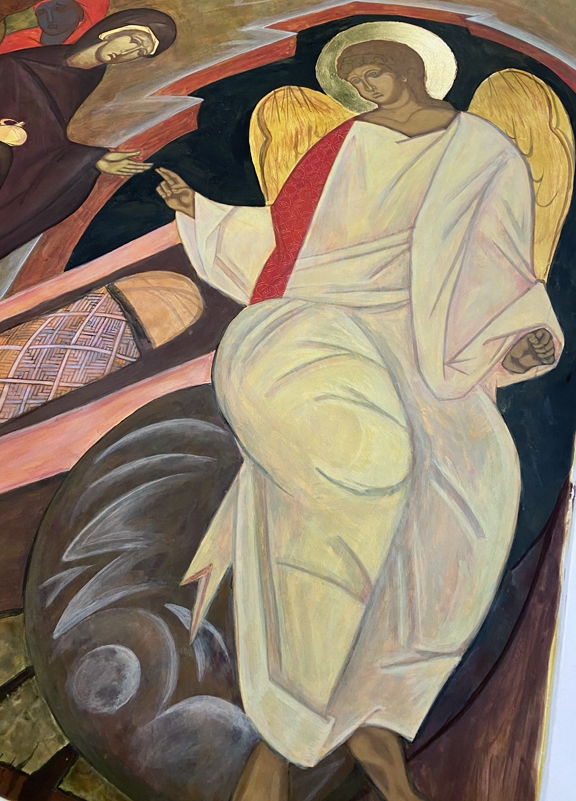
Ania continues to develop expression on Mary Magdalene’s face with progressive stages and many layers of highlights typical for the iconographic style. Egg tempera painting utilizes numerous transparent layers of pigment that create depth.
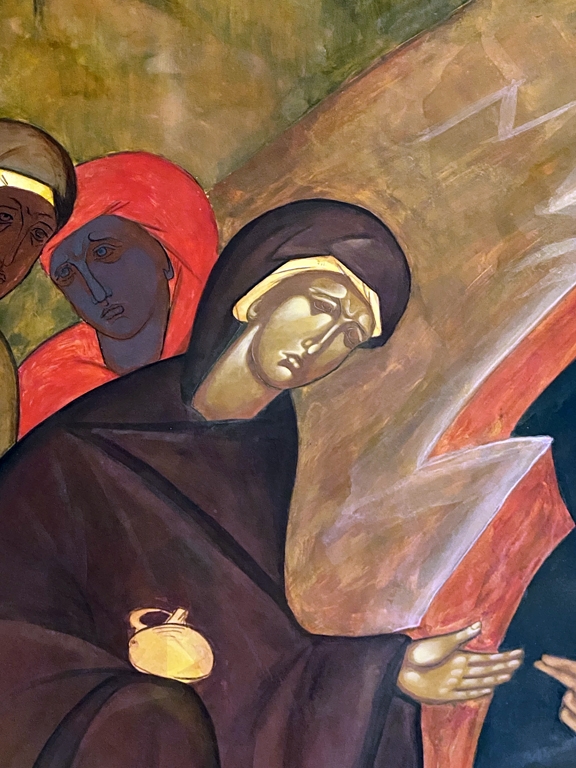
In Iconography, facial masses are distinctive areas that are highlighted with progressively lighter pigment, moving in to create smaller, focal points with each successive application — a process which creates dimension, expression and vibrance. It is part of what we refer to as the enlivening process. Since we treat all skin in the same way, highlights applied to the face are also applied in the same way to hands and any other exposed skin. An example is shown here where you see Mary Magdalene’s highlighted hand reaching out in supplication to the Angel’s blessing.
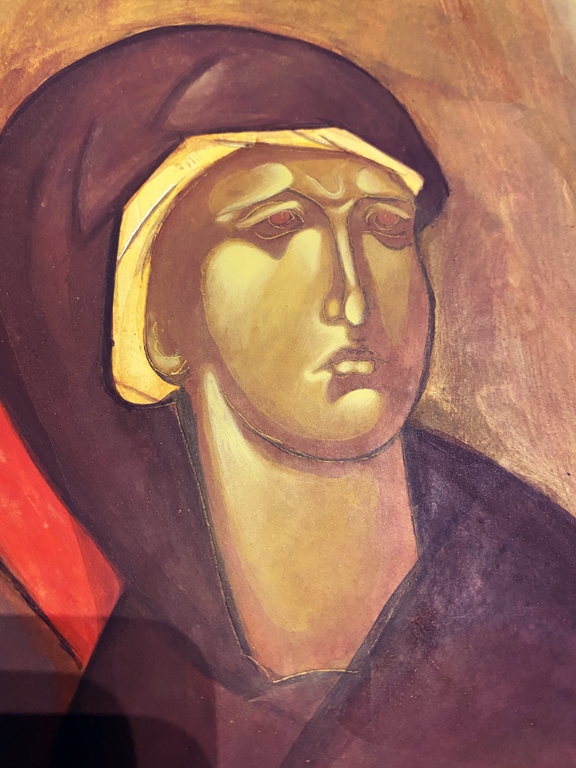
This close up of Mary Magdalene’s face beautifully demonstrates the concept of “facial masses” that create expressiveness in the iconographic style. The brightest highlights are concentrated closest to places on a Holy person’s face from which holiness exudes – the eyes (vision/sight), the nose (breath), the mouth (words), the ears (hearing).
Faces and places in iconography are not intended to appear realistic because it is unncessary for Holy people to look just like us. Icons portray saints in their transcendent and transfigured state, which is one of the reasons why gold (representative of Heaven, or a holy event) is used as a background in lieu of a blue sky.
Church art has a different understanding of beauty. The beauty of the spiritual is above physical beauty, and the goal of the Christian life is to ascend to the very Source of beauty, who is God. Nature is only a means of knowing God. Through the contemplation of nature’s beauty, man is called to glorify God the Creator, and to develop the beauty of man’s own inner image, growing and becoming renewed in Christ as a new creature.”
Mother Iuliana (Sokolova) from The Iconographer’s Labor
Translated and annotated by Paul Stetsenko (2015)
